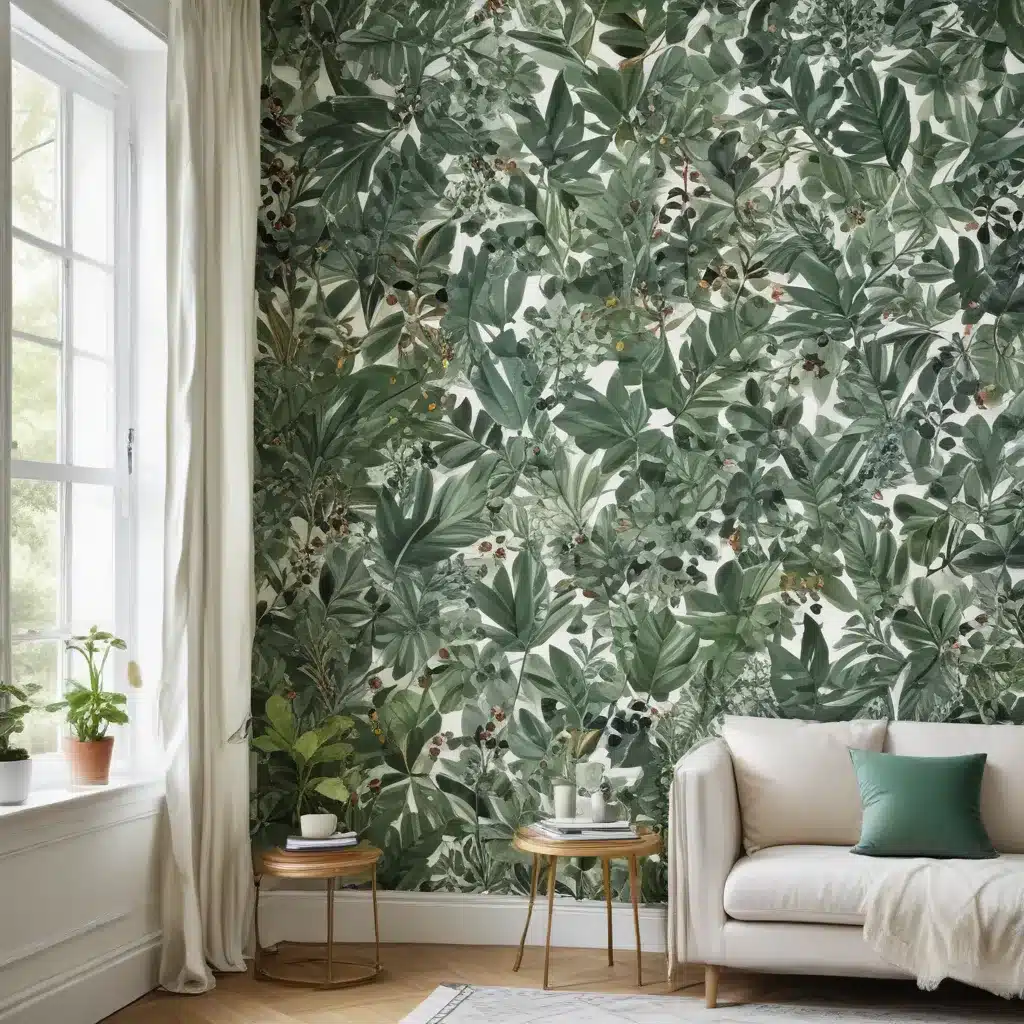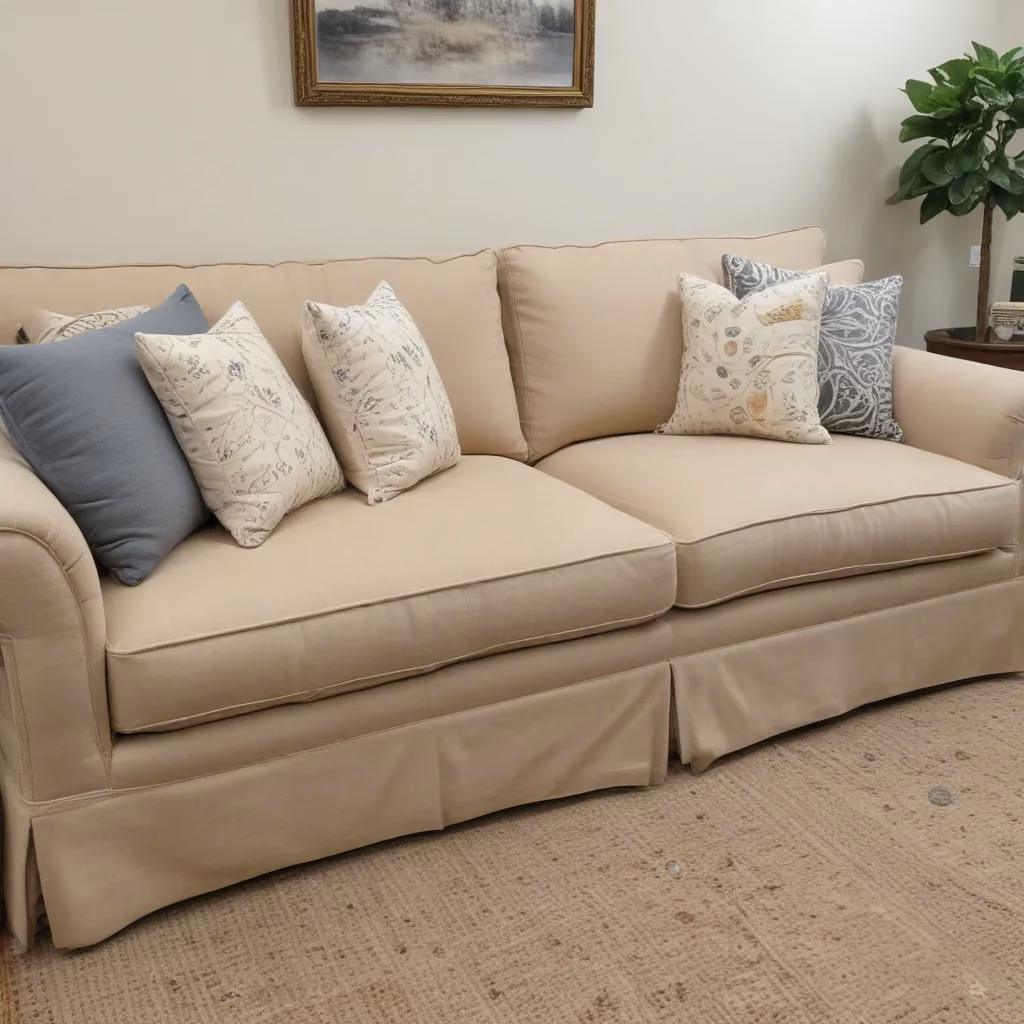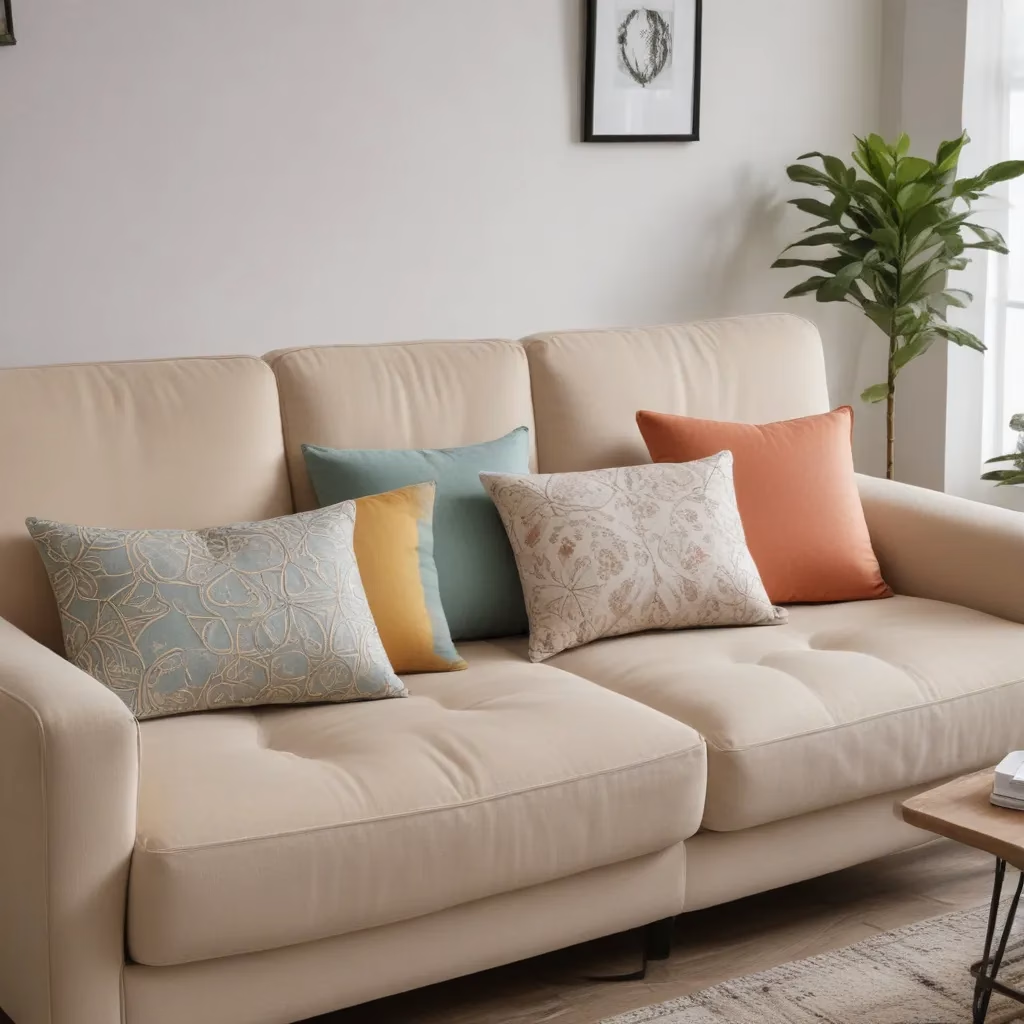Uncovering the Magic of Eco-Printing
As a lifelong maker and designer, I’ve always been drawn to the forms and textures of the natural world. There’s just something so captivating about the way leaves, flowers, and other botanical elements can transform a plain piece of fabric into a work of art. And when I discovered the art of eco-printing, I was instantly hooked.
Eco-printing, also known as nature printing, is a fascinating technique that allows you to capture the beauty of nature right on your textiles. Unlike traditional printing methods that rely on synthetic inks or dyes, eco-printing uses the tannins and pigments found in leaves, flowers, and other plant materials to create stunning, one-of-a-kind designs.
As Barb from MadeByBarb explains, the process is both simple and complex. It involves carefully selecting and preparing your plant materials, pre-treating your fabric, and then using heat and moisture to transfer the natural colors and patterns onto the cloth. The results can be absolutely breathtaking, with each piece reflecting the unique characteristics of the leaves and flowers used.
Bringing the Outdoors In
As someone who loves to incorporate natural elements into my home, I’ve been absolutely captivated by the idea of using eco-printed fabrics to create cozy, nature-inspired spaces. Just imagine snuggling up on a custom sofa adorned with vibrant leaf or botanical prints, or cuddling up in a plush throw showcasing the delicate veining of a fern.
It’s a way to literally bring the outside in, to surround ourselves with the beauty and tranquility of the natural world, even in the comfort of our own homes. And the best part? Each piece is completely unique, a true one-of-a-kind work of art.
Mastering the Eco-Printing Technique
Of course, as with any craft, there’s a bit of a learning curve when it comes to eco-printing. Barb from MadeByBarb shares some valuable insights on the process, starting with the importance of properly preparing your fabric.
“To make sure you are starting with the cleanest possible fibres, you should scour your fabric,” she explains. “Most fabrics have some coatings, starches, and buildup of oils, and scouring is a strong cleaning process to get rid of these impurities.”
For cotton, the recommended pre-treatment is a 2-hour simmer in a washing soda and soda ash solution, followed by a thorough rinse. This helps the fabric better absorb the natural dyes from the leaves and flowers.
Next comes the mordanting process, which helps the fabric hold onto the eco-printed colors. Barb recommends using a soy milk solution, applying it in multiple soak and dry cycles to really get the fibres ready for printing.
Choosing the Right Plant Materials
Of course, the real magic happens when you start selecting your botanical ingredients. Barb suggests focusing on leaves with high tannin content, such as maple, Japanese maple, rose, sumac, eucalyptus, smoke bush, and black walnut. These tend to produce the richest, most vibrant prints.
But the process isn’t an exact science – the weather, time of year, and even the specific area where the leaves are harvested can all influence the final results. “The underside tends to print stronger as well,” Barb notes, “and each slight variation may give different effects.”
That’s part of what makes eco-printing so captivating – the element of surprise and discovery. You never quite know what you’re going to get, and that’s all part of the fun.
Experimenting with Eco-Printing Techniques
Once you’ve got your fabric and plant materials ready to go, the real experimentation can begin. Barb shares a few different techniques to try, including the classic method of dipping the leaves in an iron solution before steaming them onto the fabric.
“Depending on the type of leaves you have used, they may give off odd smells or vapour when they are steamed or boiled,” she cautions. “For that reason, I decided to do the cooking outside on the BBQ side burner.”
Another approach is to create an “iron blanket” – an extra piece of fabric soaked in the rusty iron water and then wrapped around the leaves. This can produce some really unique halo effects and blended prints, where the tannins from the leaves interact with the iron to create unexpected color combinations.
The possibilities are truly endless, and that’s what makes eco-printing such an addictive and rewarding craft. It’s all about experimenting, taking notes, and discovering what works best for your particular materials and desired aesthetic.
Bringing Eco-Prints to Life in the Home
Once you’ve mastered the eco-printing process, the real fun begins – figuring out how to incorporate those stunning botanical prints into your living space. The options are endless, from throw pillows and blankets to upholstered furniture and window treatments.
Imagine a cozy custom sofa adorned with vibrant leaf prints, or a set of eco-printed curtains framing your living room windows. The natural, earthy tones of the prints would create such a warm, inviting atmosphere, while the unique patterns add a touch of visual interest and artistry to the space.
And let’s not forget about smaller accents and accessories. An eco-printed table runner or placemats could instantly transform your dining area, while a set of botanical-inspired coasters or a throw pillow could be the perfect finishing touch for a reading nook or side table.
The beauty of eco-printing is that each piece is truly one-of-a-kind, a reflection of the natural world and the artist’s own creative vision. It’s a way to bring a little bit of the outdoors in, to surround ourselves with the beauty and tranquility of nature, even in the heart of our homes.
Cultivating a Sustainable, Nature-Inspired Aesthetic
Beyond the aesthetic appeal, eco-printing also aligns with a growing trend towards more sustainable, environmentally-conscious design. By using natural plant materials and avoiding synthetic dyes or inks, eco-printed textiles offer a greener alternative to traditional printing methods.
As the folks at DesignSoda point out, eco-printing is a wonderful way to create unique, nature-inspired pieces that can be enjoyed for years to come. And the process itself can be incredibly meditative and therapeutic, a chance to slow down, connect with the natural world, and unleash your creative spirit.
In a world that often feels increasingly disconnected from the great outdoors, eco-printing offers a way to bridge that gap, to bring a little bit of the natural beauty and tranquility into our daily lives. It’s a craft that celebrates the inherent artistry of the natural world, and invites us to embrace the imperfections and unexpected delights that come with working in harmony with Mother Nature.
So why not give eco-printing a try? Whether you’re looking to create a cozy, nature-inspired oasis in your living room or simply want to explore a new creative outlet, the possibilities are endless. Who knows what botanical wonders you might uncover?




